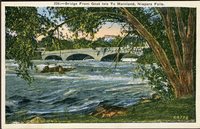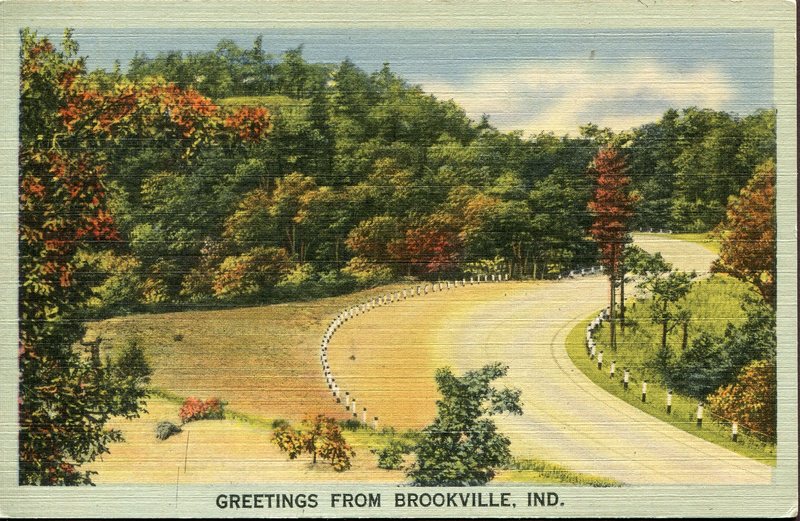Material
This portion of the exhibit offers a brief glimpse at the primary material postcards were printed on, with a particular focus on the "linen" cards of the era.
By far the most common material for producing postcards, as with most print media, was paper. Postcard printers typically used white cardstock, as did the Bridge from Goat Isle postcard (right), though off-white or cream was also common. Less frequent, but still used, were colored cardstocks. These colors tended to be light pastels, such as the light mint-green of the Greetings from Brookville postcard (below), which still allowed for the printing of images without interfering too much with the rendition of color. Light pastels also kept with U.S. postal regulations requiring that the address side of postcards remain white or light enough for addresses to be legible.
Regardless of time or place, paper was the primary material of postcards.1 However, with the introduction of new dye-based inks in the late 1920s, regular cardstock no longer facilitated the production of quality, colored postcards at an efficient rate.2 In search of a better material, Curt Teich & Co. introduced a new paper medium in 1931 that became known as "linen" and quickly took over the postcard industry.
Footnotes
- Materials other than paper were used for postcards during certain time periods. For example, from about 1905 to 1910, leather postcards were very popular in the United States. United States Postal Service Historian, "Postal History: Stamped Cards and Postcards," September 2014, PDF file, http://about.usps.com/who-we-are/postal-history/stamped-cards-and-postcards.pdf (accessed August 31, 2018), 7.
- Jeffrey L. Meikle, Postcard America: Curt Teich and the Imagining of a Nation, 1931-1950 (Austin: University of Texas Press, 2016), 37, and Alan Petrulis, "Tricolor and Process Printing: Linen Postcards," MetroPostcard.com, http://www.metropostcard.com/tech4-linens.html (accessed August 31, 2018).

